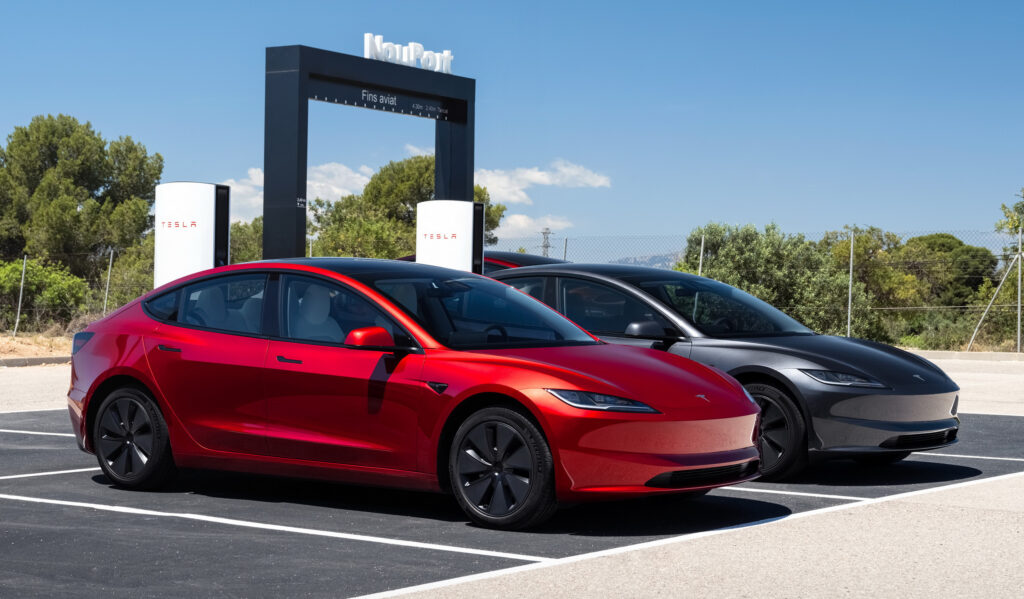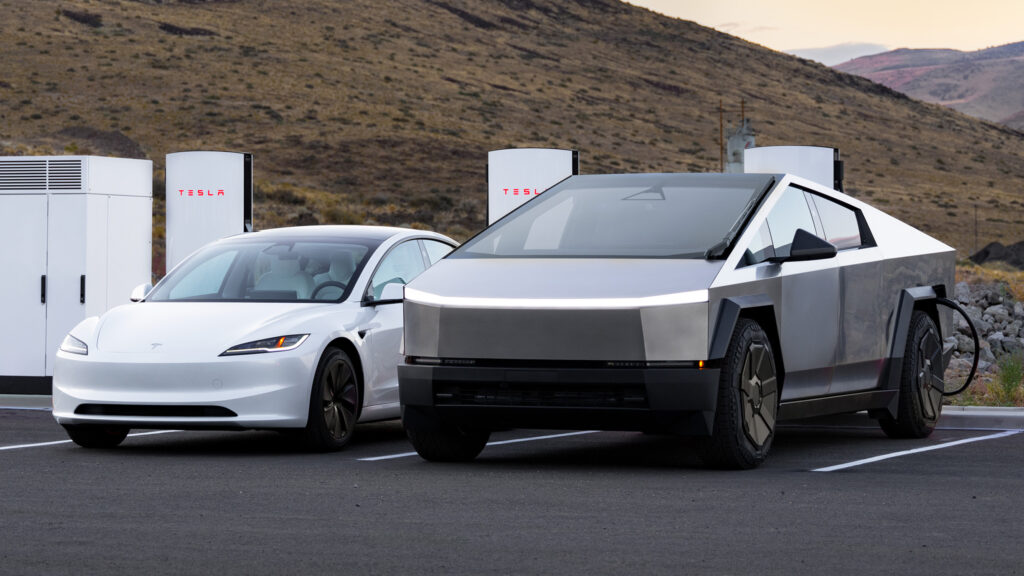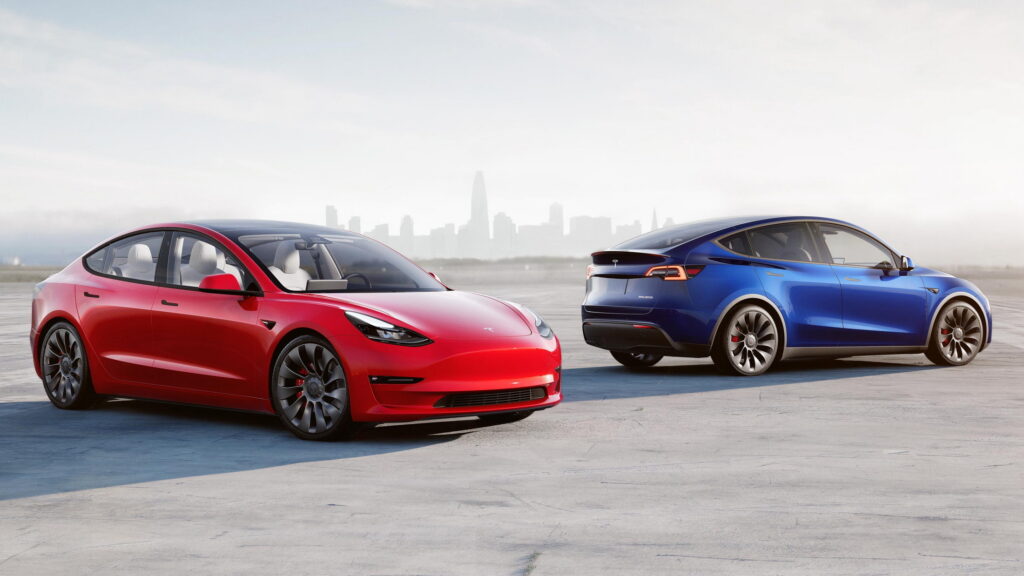Chinese-Owned EV Brands Gain Momentum In Europe, Collectively Outsell Tesla
- Chinese-owned brands outperformed Tesla in the European car market in February.
- Tesla registered 15,700 EVs last month compared with 19,800 for Chinese brands.
- BYD, Polestar and XPeng all gained ground in Europe while Tesla lost market share.
What a difference a year makes. Rewind the clock to early 2024 and Tesla’s European arm was basking in the glory of becoming the best-selling electric brand in the region for the whole of 2023, and the first company to put an EV – the Model Y – on top of the the overall sales chart.
Now, fresh sales data from 28 key markets, including the EU, the UK, Norway, and Switzerland, shows that not only are Tesla’s sales down, but the American EV brand is also being collectively outperformed by Chinese-owned automakers.
Related: Tesla’s European Sales Have Collapsed, Down 45% As EV Market Surges 31%
Figures from Jato Dynamics reveal Tesla sold 15,700 cars in February 2025, down from 28,100 a year earlier, a drop of 44 percent against an EV market that was up by 26 percent to 164,100 units. Chinese-owned brands clocked up 19,800 sales this February, throwing serious shade in Tesla’s direction and leaving us in no doubt that China is making serious inroads into the European car market. And it’s only just started.
Tesla’s Market Share Takes a Hit
Tesla’s poor performance cut its market share to 9.6 percent, its worst February showing for five years, and the automaker’s year-to-date market share is down from 18.4 percent to 7.7 percent compared with 2024’s numbers. One partial explanation for that is the arrival of the facelifted Model Y ‘Juniper,’ which was revealed in January of this year, but wasn’t immediately available in Europe. It’s only natural that buyers would want to wait for the new-look SUV.
Model Y sales fell 56 percent to 8,800 units, while Model 3 sales fell by a less extreme (but still worrying) 14 percent to 6,800 units, which Jato says indicates Tesla’s overall slide is less to do with anti-Elon Musk sentiment than the imminent arrival of the the new Y.
EV Sales by Brand, Feb 25
| # | Brand | Sales Feb-25 | VS Feb-24 |
| 1 | Volkswagen | 19,565 | +180% |
| 2 | Tesla | 15,737 | -44% |
| 3 | BMW | 13,475 | +20% |
| 4 | Audi | 9,868 | +70% |
| 5 | Renault | 9,387 | +96% |
| 6 | Kia | 8,153 | +56% |
| 7 | Mercedes | 7,363 | +5% |
| 8 | Peugeot | 7,200 | +1% |
| 9 | Skoda | 6,922 | +63% |
| 10 | Volvo | 6,656 | -30% |
| 11 | Hyundai | 6,528 | +47% |
| 12 | Citroen | 6,202 | +190% |
| 13 | Cupra | 5,861 | +179% |
| 14 | Mini | 5,123 | +804% |
| 15 | BYD | 4,436 | +94% |
| 16 | Opel/Vauxhall | 3,772 | +57% |
| 17 | Ford | 3,339 | +146% |
| 18 | Dacia | 2,934 | +7% |
| 19 | Toyota | 2,566 | +52% |
| 20 | Porsche | 2,521 | +459% |
| 21 | Polestar | 2,405 | +84% |
| 22 | MG | 2,260 | -67% |
| 23 | Nissan | 2,205 | +24% |
| 24 | Fiat | 2,013 | -47% |
| 25 | Xpeng | 1,034 | +259% |
VW, Chinese Brands, and the New Wave
Whether the new model can fully reverse the slide remains to be seen, but we doubt it. The Juniper changes aren’t that comprehensive and Chinese brands (and legacy Western ones) are only increasing their attack on Tesla. BYD’s sales grew 94 percent to 4,436, Polestar was up 84 percent to 2,405, and newcomer XPeng logged 1,034 sales, representing an increase of 259 percent from February 2024.
The best-performing brand in terms of EV sales, however, was VW, whose registrations boomed 180 percent to 19,600. The German brand’s ID.4 was the third-best-selling EV behind the Model 3 and Model Y, and VW,’s ID.7 and ID.3 were in fifth and sixth spot, separated from the ID.4 by Renault’s Car of the Year-winning 5.
EV Sales by Model, Feb 25
| # | Model | Sales Feb-25 | VS Feb-24 |
| 1 | Tesla Model Y | 8,790 | -56% |
| 2 | Tesla Model 3 | 6,834 | -14% |
| 3 | Volkswagen ID.4 | 6,172 | +150% |
| 4 | Renault 5 | 5,659 | new |
| 5 | Volkswagen ID.7 | 5,432 | new |
| 6 | Volkswagen ID.3 | 5,384 | +114% |
| 7 | Kia EV3 | 5,376 | new |
| 8 | Citroen C3 | 5,156 | new |
| 9 | Skoda Enyaq | 4,682 | +41% |
| 10 | BMW iX1 | 4,370 | +24% |
| 11 | Cupra Born | 3,404 | +64% |
| 12 | Audi Q4 e-tron | 3,392 | +24% |
| 13 | Volvo EX30 | 3,314 | -11% |
| 14 | Audi Q6 e-tron | 3,286 | new |
| 15 | BMW i4 | 3,198 | -14% |
| 16 | Mercedes EQA | 2,938 | +25% |
| 17 | Dacia Spring | 2,934 | +7% |
| 18 | Hyundai Kona | 2,474 | +8% |
| 19 | Cupra Tavascan | 2,456 | new |
| 20 | Renault Scenic | 2,437 | new |
| 21 | Toyota bZ4X | 2,404 | +49% |
| 22 | Ford Explorer EV | 2,084 | new |
| 23 | Peugeot 3008 | 2,010 | new |
| 24 | Porsche Macan | 1,986 | new |
| 25 | BMW iX2 | 1,983 | +348% |






